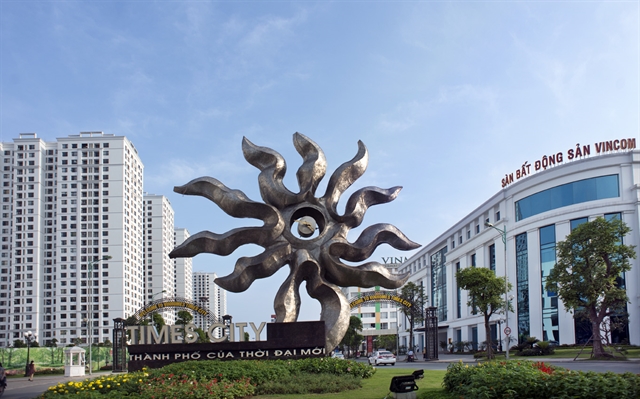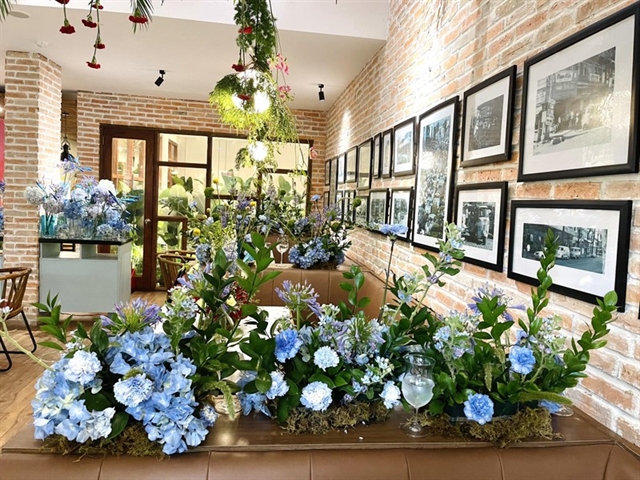

The latest Indian eatery in Hà Nội adds spice to the Xmas Cheer with new dishes and matching wines, writes Hari Chathrattil
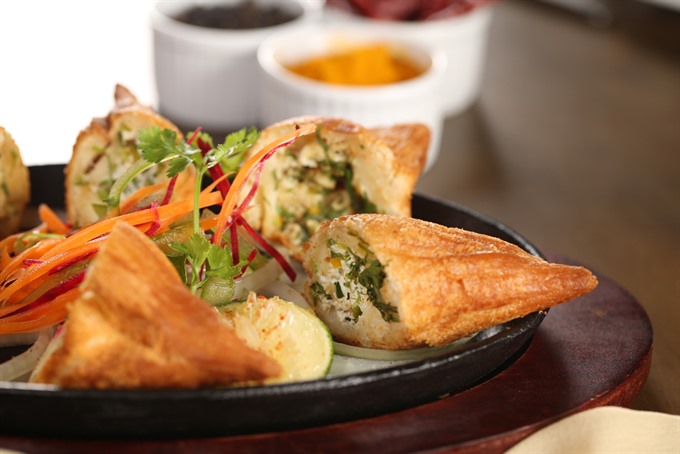 |
| Everyday special: The Dahi de kabab is one of the unusual starters served at Spices. Photos courtesy Spices website. |
The latest Indian eatery in Hà Nội adds spice to the Xmas Cheer with new dishes and matching wines, writes Hari Chathrattil
A collective head-scratching was in progress as we entered the restaurant.
Thu, Shiva and a few other staff standing around a cylindrical pillar covered with thin wooden panels, trying to figure out how that could be converted into a Christmas tree.
I could not think of any practically feasible idea, so I decided to focus on what we were there for. To eat.
And eat we did. More about that meal soon.
On my next visit, I was impressed with the simple, inexpensive solution that had created the Xmas tree at Spices, the new Indian restaurant to open in Hà Nội.
The mandatory gift boxes were placed around the pillar and red and green coloured paper had been cut and shaped to make a tree in three or four sections. The paper sections were bordered with silver White stickers of snowflakes, Santa and reindeer and other decorations graced the glass walls in front.
After congratulating Thu and her staff, I wanted to know if there were any Xmas specials to go around, food and spirit-wise.
Discount on wines specially selected to go with Indian food, I was told.
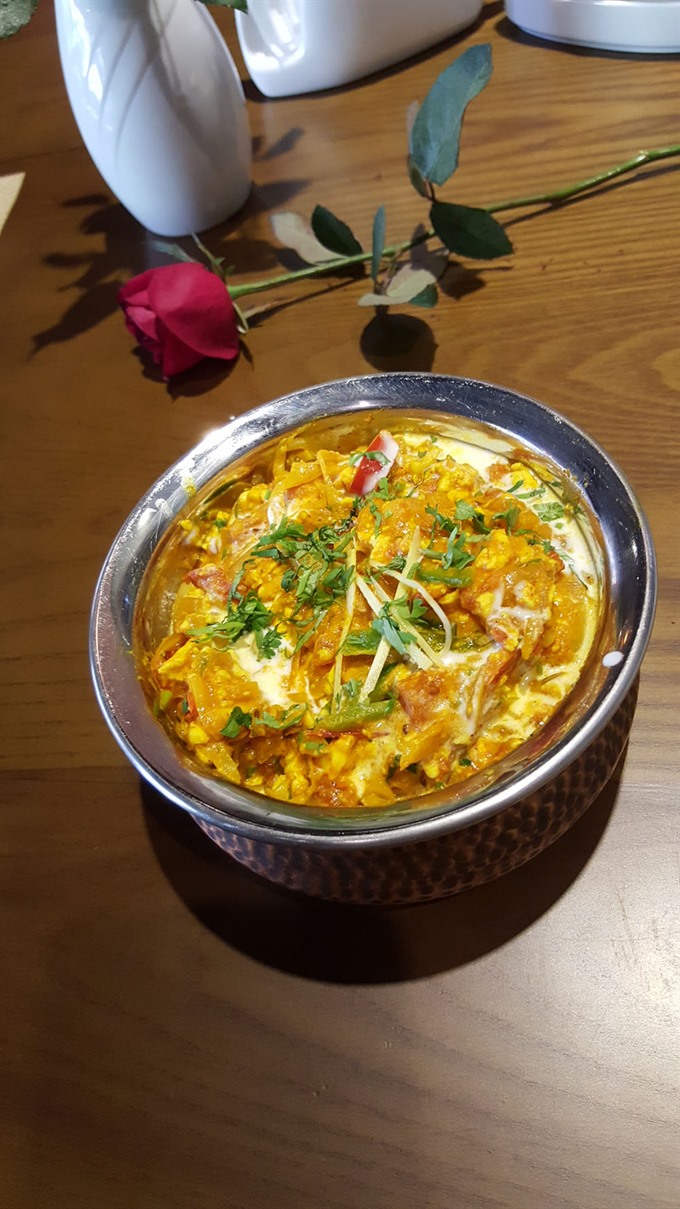 |
| Going rarra: Minced paneer cooked with onions, capsicum and tomatoes is spicy, and can be spicier. Why it’s called rarra is anybody’s guess. |
I wanted to know more and Đỗ Thúy An, whose charming smile is part of the appetizer to every meal at Spices, obliged.
"Spicier wines are for spicier food," she said.
"Give me an example," I said.
"Well," she said, "if you have any of the Chettinad dishes, which are both spicy and a bit sour, the wine should be a strong one, with a sour tinge as well."
"And how do we know that a wine would have that sourness? Depends on the grape," she said.
To have a Vietnamese woman speak to you about Chettinad dishes and grapes that make wine spicy and sour was really cool. It also showed that the restaurant is serious about training its employees to provide good, informed service to their customers, most of whom are not Indians.
But I was a bit more curious. I asked An if she’d tried any of the Indian dishes she talks about, and what her favourite dish was.
"Mutton tawa masala (VNĐ150,000)," she said. "Hmm. Your favourite bread? Roti." Hmm again.
Usually, Vietnamese customers having Indian food go for the mildly spicy chicken makhini (chicken butter masala) or a panneer makhini (cottage cheese chunks in a tomato gravy) with garlic and/or butter naans as the bread of choice.
An’s favourite, and that of a lot of Korean customers who frequent the restaurant, is a really spicy lamb curry and her choice of bread is the more wholesome, dry roti.
The tastes, they are a changin.
Which brings us back to the meals my friends and I have had here.
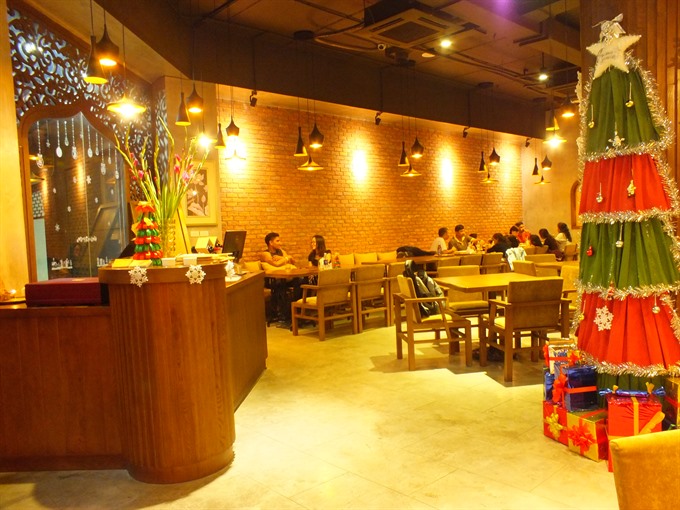 |
| Holiday spirit: A wooden pillar hosts Christmas Tree decorations at the Spices Restaurant, the newest Indian eatery in Ha Noi. Photo Hari Chathrattil |
Aware of the need to be different, Spices has a menu with several dishes that are not found in other Indian restaurants in the capital city. The “Amras ke Aloo” (VNĐ85,000) for instance, a potato curry made with green mango pulp. Given the sourness involved, this probably goes well with The Accomplice, a Shiraz wine from Australia (VNĐ575,000), described as “plum fruit with some spiciness… finishing with soft tannins.
“I have been to many places, but never had this dish before,” said Harihara Ramachandran, a software professional based in Singapore visiting Việt Nam for the first time. The gaggle of adults and children he was with nodded assent, all of them satisfied with all the dishes they’d tried.
One of them thanked Shivam, the manager, for the “thayir saadam” that the chefs made after taking instructions from the guests themselves. Basically rice mixed with yoghurt and seasoned with mustard seeds, red chillies and curry leaves, it is a very simple south Indian dish that is quite difficult to get right. It’s not on the Spices menu, but the crew of north Indian chefs, Manish Singh Rawat, Shyam Singh and Shashi Kumar, are open to suggestions and willing to innovate.
Their yoghurt-based starter, Dahi ke kabab (VNĐ95,000), is another rarity in Việt Nam worth trying, as is another appetiser, Paneer Tikka Chatpatta (VNĐ95,000), cottage cheese chunks marinated with tomato and garlic chutney before being grilled in the tandoor oven, and served like a sizzler on a bed of caramelised onions.
“Texture of tofu and taste of cheese,” said a Vietnamese friend trying the dish for the first time.
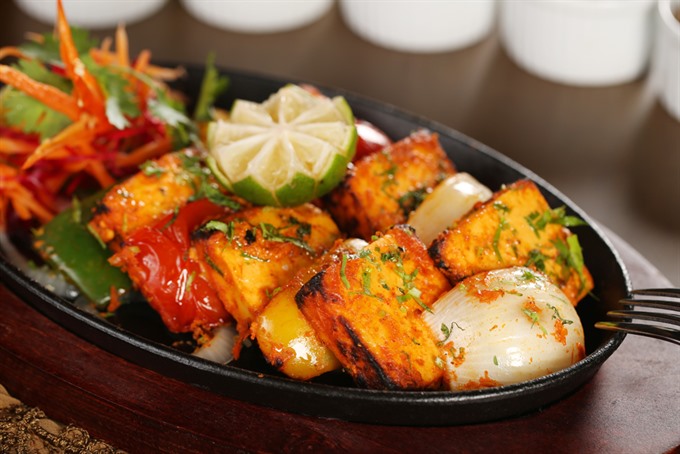 |
| Grilled goodness: The Paneer Tikka Chatpatta comprises cottage cheese cubes marinated with tomato and garlic chutney, grilled in a tandoor. |
Baingan Bartha (VNĐ85,000), Khumb Mutter Masala (VNĐ85,000), Paneer Rarra (VNĐ95,000) and three different lentil curries (Dal Makhini, Dal Panchrangi and Dal Dhaba VNĐ85,000) are some of the main vegetarian dishes I have tried and would recommend, alongside a bread selection comprising naans, parathas and rotis.
The selection of rice dishes in the “Basmati Khazana” also contains a spicy Mirchi Pulao (VNĐ70,000) that I have not found elsewhere.
The Litchi ki Tehri dessert deserves a special mention. This is a lightly sweet condensed milk dish cooked over a low flame for a long time, chilled and served with nuts and fruits. Adding the litchi to it is an inspired choice.
Spices, which opened just three months ago, aims to be different, and going by the menu and the taste of dishes I have tried so far, it has succeeded.
Aesthetically the most pleasing Indian restaurant in town with a quietly elegant interior bathed in soft hues, and old sewing-machines converted into tables, Spices already has patrons who have become regulars.
Not surprising. Just the large number of new dishes is worth repeat visits. VNS
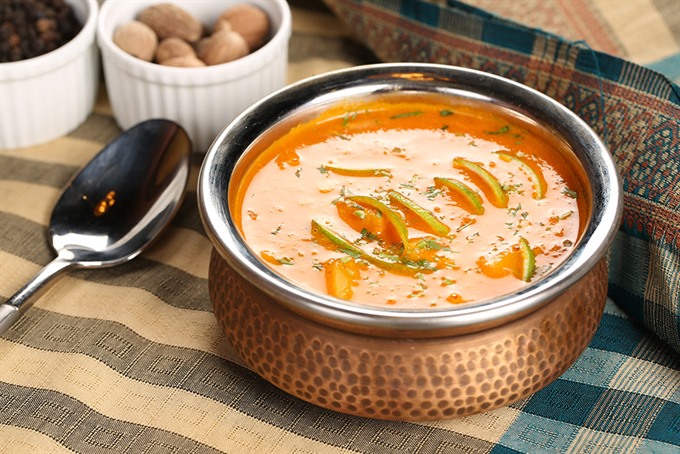 |
| Mango tango: A potato curry cooked with green mango pulp is not served elsewhere in Viet Nam. |
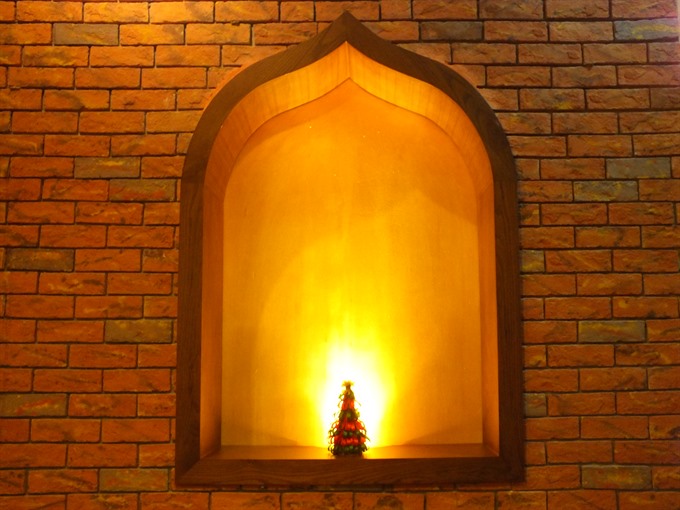 |
| Xmas light: A handmade Christmas tree nestles below an arch at the Spices restaurant in Ha Noi. Photo Hari Chathrattil |

